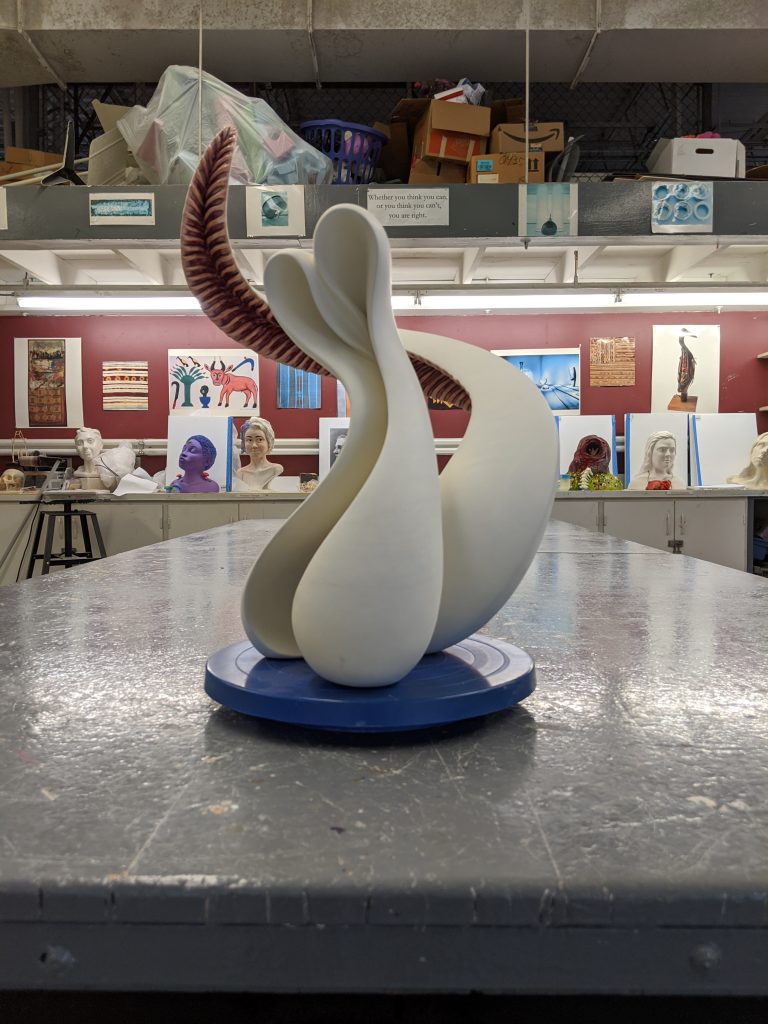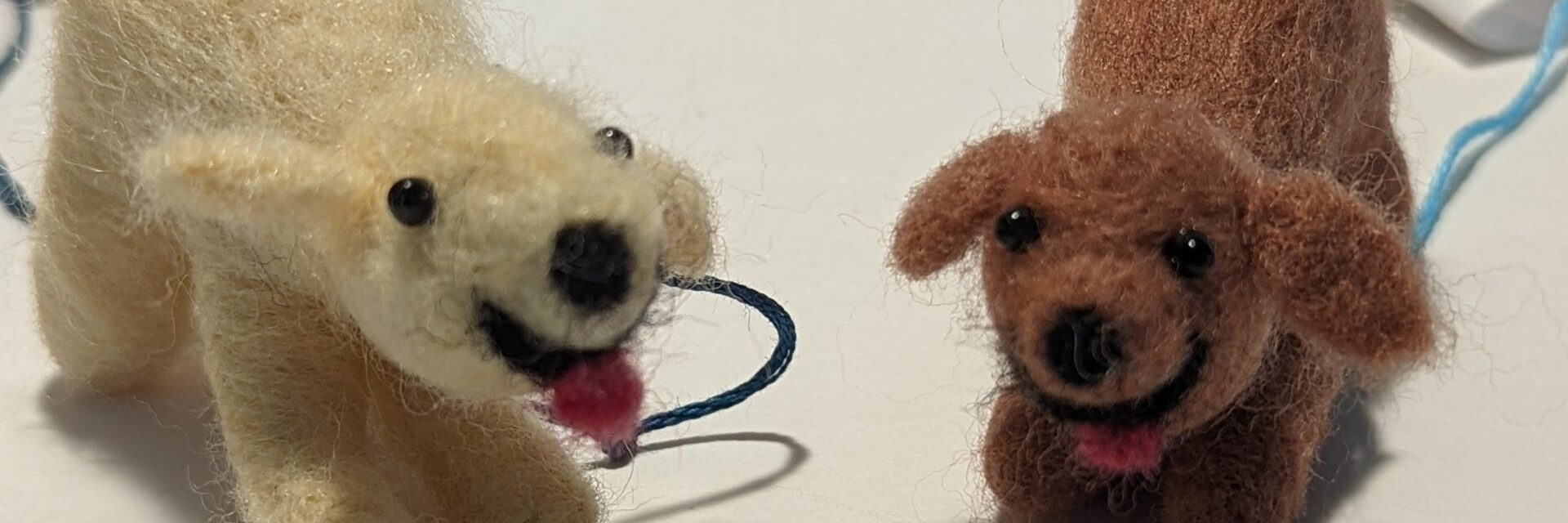I wanted to present Agisoft with a challenge for our 3-D modeling project, so I selected a sculpture of Holly Fischer’s, who is an artist and faculty member at my undergraduate school, Meredith College. Holly is an amazing artist, and was kind enough to let me photograph one of her sculptures in the 3-D studio at Meredith. Here is a photo of the sculpture.

I wanted to find out how Agisoft would handle such a shape. I took 30 pictures, from all sides, about 2 ft. away, as I had the sculpture on a turntable. I also photographed the top and bottom of the sculpture. Here is the result:
Studio-1What you should be seeing is a fairly accurate rendering of the background of the studio, not the actual sculpture itself. I should have placed something plain behind the sculpture so the software couldn’t see the colorful background. That was my first attempt.
For my second attempt, I removed the background completely before I began the rendering process. However, my laptop is still rendering, and I left it running overnight. I am not filled with optimism at this point. If I had to guess what is wrong with this attempt, it is that perhaps I took too many pictures. I will let it run a bit longer and see what happens.
It just finished rendering, and the second attempt came out worse than the first. I am not sure where I went wrong, but clearly I haven’t done all the steps correctly. Over the weekend, I will take new photos of something else and try again.
I am also having difficulty embedding the pdf file. I added a pdf embedder plug-in, which is working, but I am not seeing anything when I preview the post. I don’t know if this is something that will only work when it is published, or not.
Even though I am having difficulty with Agisoft, I think this technology is amazing, and has many applications for art historians. Being able to view an object from anywhere in the world, from multiple perspectives, without damaging the object is an amazing opportunity for scholars.
The articles we read for class discussion this week relate to digital humanities as applied to the field of art history. Sydni Dunn’s article discusses the difficulties facing digital humanists in using a digital portfolio, or project in place of a traditional paper for their scholarship. So many of them fear being denied tenure with digital-only projects that they wind up doing twice the amount of work as those choosing more traditional modes of scholarship. While universities are being more open to digital projects, they are not completely embraced in the same manner as traditional scholarship. This creates a lot of uncertainty for academics in the digital humanities. This will continue to be a problem, because as we know from our readings and discussions this semester, art historians in general are rather wary of digital projects, and publishing still remains the gold standard of scholarship. Many art historians don’t see the need for digital art history, and unfortunately many examples we are shown are not entirely convincing. It seems that many of these projects fall into the interesting, but not necessarily revelatory, category. Until there is a digital project that could not be done on paper, and provokes some new understanding about the material it examines, art historians will remain exactly where they are now, using PowerPoint.
Dunn advises that when assessing someone’s digital project, evaluators should be told to examine the work in its digital form, not screenshots, thumbnails, or a printout. This shows very clearly the level of familiarity that most have with digital projects. If you have to tell them to look at it in its native state, you’re already in trouble. It seems pointless to be evaluated on a digital project by those who don’t understand what went into its creation. Dunn does say that it is advisable for the digital project to be evaluated by those in the digital humanities, but this may not be possible in all departments. This poses a real problem for those working in the digital humanities, and it is not easily overcome. This explains why these scholars find themselves doing double the work, by providing their tenure committee with not only their digital project, but a traditional paper as well. Those working in alternate academic careers may be able to provide solely a digital project as proof of scholarship, but many of these positions are not tenure-track positions. There remains a skepticism towards the scholarship of a digital-only project, which keeps many art historians from embracing digital art history.
References:
Sydni Dunn, “Digital Humanists: If You Want Tenure, Do Double the Work,” Chronicle of Higher Education, 5 January 2014, https://chroniclevitae.com/news/249-digital-humanists-if-you-want-tenure-do-double-the-work

Hey Annie, I unfortunately can’t see the model because of some issue embedding the pdf file. However, I’m curious how you edited out the background. Did you do that in photoshop or in Agisoft itself? What was less successful about that second attempt? I think background was an issue for me as well so I’m anxious to hear about this experience for you!